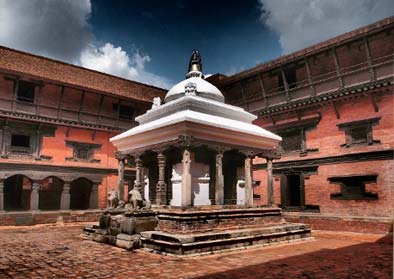Patan Museum
Housed in the courtyard within the northernmost building complex of the Durbar Square, Patan Museum displays the traditional sacred art of Nepal in an illustrious architectural setting. Listed as one of UNESCO’s World Heritage Sites, the Patan Museum was inaugurated in 1997 by Late King Birendra Bir Bikram Shah.The Museum’s exhibits cover a long span of Nepal’s cultural history and some rare objects are among its treasures. Most of the objects are cast bronzes and gilt copper repouss? work, traditional crafts for which Patan is famous.


The museum was formerly the residence of the Malla Kings, and now the section of the Royal Palace surrounding Keshav Narayan Chowk houses one of the finest collections of religious art in Asia. The museum is a national treasure introducing invaluable art, symbolism and architecture of the valley. To tour the entire museum properly, you need at least an hour or two.
The collection in the museum is displayed in a series of brick and timber rooms, linked by steep and narrow stairways. With labels displaying information about each statue, carvings and objects, you can put a name to many of the deities depicted at temples around the valley. The museum also houses some interesting display of techniques used to create these beautiful objects, including the art of repouss? and the ‘lost-wax’ method of casting. The topmost floor of the museum houses some fascinating photos of Patan from the 19th century.
There is a garden in the museum that has been adapted to incorporate a pleasant resting place. The Patan Museum Caf? has been created in a way to complement the magnificent period ambience achieved by the architects and builders of the Museum. Offering both traditional and western delicacies, along with light meals, the caf? can also be booked for special evening functions for classical dance or music for functions like receptions, banquets, theatre, etc.
The museum also houses a shop, selling reproductions of some of the works displayed inside. This is the first public museum created as an independent institution, and has been acclaimed by the visitors as one of the finest museums in South Asia.



